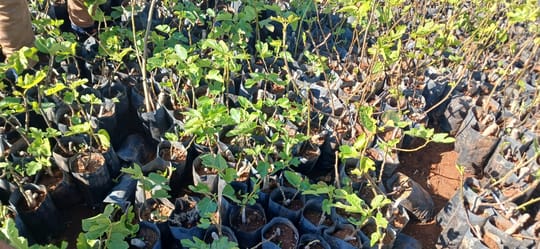The High Atlas Foundation and Holistic Sustainable Development

 By Jan Thibaut
By Jan Thibaut
HAF Intern
Tassa Ouirgane
The High Atlas Foundation and Holistic Sustainable Development Hi there! The name’s Jan Thibaut, a 25-year old master student and new intern with the High Atlas Foundation. Over the next couple of months I will try to make you, the reader, acquainted with the foundation and its partners, Moroccan culture (both rooted in the Arabic as well as the Taselhit/Berber traditions), and my challenges, successes and failures whilst living in a small community in the mountains of the High Atlas range. I’m do this to document my experiences as a newcomer to the field of development, to spread information and awareness about the challenges we’re facing in today’s world and the organisations trying to tackle them, and to present this wonderfully inviting culture as I explore it myself.
The High Atlas Foundation (HAF) was founded in 2000 by a motivated group of former Peace Corps volunteers from the United States. All of them gained an extensive knowledge of Moroccan culture, language and traditions during their own immersive stays in the country, and have put together a diverse team of Moroccan, American and international enthusiasts. Project managers, volunteers, interns, engineers and (inter)national experts alike come together from very different backgrounds to work with the local population to bring about lasting, sustainable transformation.
Part of HAF’s motivated, international staff, with my as fresh arrival standing in the background Now, explaining HAF’s multitude of different projects and envisioned goals can be a tricky thing, partly because of the holistic interpretation of societal transformation that lies at the base of their conception. The foundation does not limit its scope to purely economic, social, or environmental factors in society (if such things even exist), but looks at the interplay between them, the cyclic stream of challenges and possibilities that feed into each other and determine most of our day-today activities. By taking this assortment of different viewpoints into account, obstacles to the quality of life can be tackled in a holistic, sustainable and lasting fashion. To clarify this trail of thought, let’s take soil erosion due to deforestation and agricultural exploitation as an example.
When viewed as a purely environmental problem, an easy solution presents itself: by giving the land a protected status (by turning it into a national park for example) and placing it under the control of a governmental forestry department, the harmful effects of agricultural overuse can be stopped, trees will be given a chance to grow, and soil erosion will be halted. Sounds like a perfect plan, right? However, this environmentally motivated solution will have harmful effects on the social and economic parts of daily life: the loss of farming lands will lead to a decrease of income for the local population, which will negatively affect their health, sanitation, education, mobility, and so on. It is this interconnectedness that turns developmental work into a minefield of unexpected consequences, with HAF wielding the metal detector to safely navigate through.
At the core of all of HAF’s projects and initiatives is the Participatory Approach, aimed at empowering community beneficiaries and placing them at the centre of the entire process. Community planning meetings are organised in which local inhabitants formulate their ideas and opinions regarding possible projects, from conception and implementation to monitoring and evaluation. In this process, we can already see two of HAF’s goals at play; Firstly, they aim to train people from the Moroccan communities to intervene as facilitators by organising workshops and working together with schools and the university. Secondly, they try to form the bridge between the wishes of the communities and the help offered by (inter)national organisations and governments. They do so because, oftentimes, gaining access to the funding provided by governmental and developmental bodies is a complicated process that takes place outside of the reach of the actual (rural) population.
How the ideas and aspirations of community members get put into practice will become clear during blogs to come!
BIO: This blog tries to paint a picture of HAF’s mission and vision, based on an intern’s point of view as newcomer to the field of development.